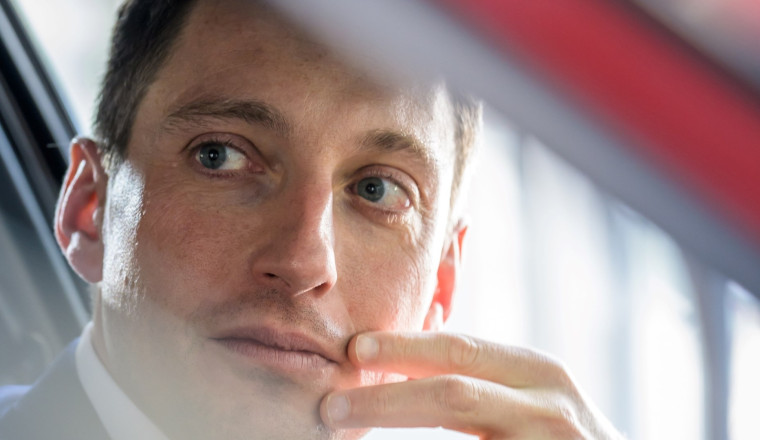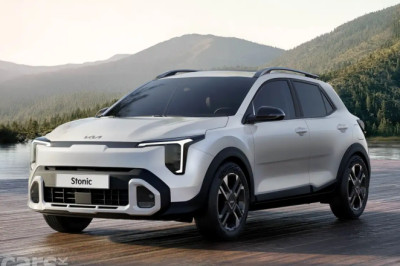
► CAR interviews Audi’s chief tech boss
► New Audi’s battles still rage
► Can Bouquot help steady the ship?
When Audi CEO Gernot Dollner presented a dispiriting set of sales and financial figures for 2024 at the brand’s annual media conference in March, there was only one other board member he name-checked. He wasn’t levelling blame: the member in question only joined halfway through the year. At a less formal preview for journalists the night before, the same board member was the only one to join Dollner on stage. And when I went to Ingolstadt to interview Dollner for this magazine in January, the same guy was there by his side.
Once, designers and chassis gurus enjoyed a media presence and public awareness which sometimes exceeded their actual significance within their car maker, and often outstripped that of their CEOs. Times change. In the EV age we care a little less about dynamics but a lot more about tech, from battery chemistry to how quickly and easily the user interface lets you do stuff like flick off the irritating legally-mandated speed-limit bonging. Car makers are now more likely to offer journalists an interview with their CTO or CSO – chief technology or software officer – than with their resident spring-and-damper geek. Sometimes, the hiring of a CTO is a big event, like Ford’s splashy recruitment of Doug Field, formerly of Apple and Tesla. Any extra exposure the CTOs get over other senior figures within a car maker is entirely commensurate with their importance in this new era of EVs and SDVs, or software-defined vehicles. Sometimes you feel like the fortunes of a car company lie more in the hands of the CTO than the CEO.
At least some of Audi’s present woes will ease next year after an unprecedented, two-year, 20-model range renewal which is costing it sales now but will leave it with the freshest line-up of its peer group once complete. New Audi might still be beset by the storms raging around all its rivals: stalling demand for EVs, global geopolitical turmoil, regulatory uncertainty, falling demand in China and a deep recession in Germany. But Dollner plans to keep moving, and has a clear long-term vision for a ‘fundamental rebuild of the company’: reducing committees, flattening hierarchies and rethinking how Audi creates new models, developing them in a ‘China-speed’ two years rather than the four or five Germany typically takes. The old ways won’t work in a future of SDVs, he told the conference.
The man responsible for all of that is now his constant shadow. The 39-year-old Geoffrey Bouquot joined Audi as board member for Innovation and Software-Defined Vehicles in June last year, before taking Technical Development off Dollner’s hands at the start of this year. Bouquot is the CTO, basically, and given the transformational importance of his work and the faith that Dollner has placed in him it’s little wonder we’re seeing so much of him.
Dollner is no fool, having instigated VW’s brilliant and unprecedented deal to use Rivian’s electronic architecture when he was group strategy chief: a brave if tacit admission that vast VW couldn’t do the job as well as a start-up. But with Bouquot’s arrival you get the faint sense of the Audi board hiring a ‘young person’ to understand all of this for them, telling us all about their clever hire, then stepping back from the problem and letting him get on with it.
Perhaps that’s unfair, and if anyone can re-engineer both Audis and Audi it’s Bouquot, who possesses a global-standard intellect. Raised just south of Paris, he studied physics and engineering at two of its most elite universities, the Ecole Polytechnique and the Ecole des Mines, before joining the World Economic Forum’s Young Global Leaders programme and studying at two of America’s top institutions, the Lawrence Berkeley National Laboratory at the University of California, and the Harvard Kennedy School. While still in his twenties he was the technical advisor to the French Minister of Defence, before becoming CTO at French parts maker Valeo, where he led 20,000 engineers working on everything from EV powertrains to autonomous driving.
But right now his job is to make me a coffee. There isn’t time in his schedule to head into downtown Ingolstadt and sit in a cafe so we’re having it in the corner office suite he now occupies at Audi HQ. Despite the impressive size of his entourage he makes it himself (well, he puts a capsule in the machine) and apologises for liking it black but long: not very European, he says, and a legacy of years in the US, where his young family still lives.
He is slightly built, irritatingly good-looking, and favours the uniform of the more confident, creative young execs and designers at car companies: sharp blue suit, no tie, and sustainable white Veja trainers. Pleasingly, there’s a very French Cartier Santos on his wrist, rather than an Apple watch. In a brief, ad-hoc conversation the night before with other journalists he’d been slightly short and scratchy when asked questions he didn’t want to answer or felt he’d been asked before. But now, over coffee, with time set aside for this and with his PR man listening in he deals with my questions with the ease, apparent openness and preternatural calm of someone whose mental processing power is barely being troubled by them.
This being CAR magazine, I obviously want to place him on the car enthusiast spectrum. I wonder if he was a car kid first, or whether tech came first and led him to cars? ‘I think it’s more the second part,’ he admits. ‘I’m defining myself more as a car enthusiast right now, and enjoying it more and more, but it’s really about how to define the car of the future.’
He had a good start, though. Dad drove a Matra Murena, the mad, mid-engined, fibreglass-bodied, early-’80s French sports car with three seats in a row, and Mum had a late-’90s Mini which young Geoffrey inherited and bombed around Paris in. He’s not making full use of his current opportunities though: there’s a perfect ur-Quattro in reception in which we sit for a photo, but he hasn’t yet bust one out of the museum to drive.
It’s odd to think that the guy now responsible for Vorsprung Durch Technik wasn’t born when Audi’s single best-known innovation first hit the road and the rally stage, and it’s easy to assume that the advances on which Audi built its reputation decades ago are of little relevance now, especially to a young technocrat like Bouquot. But he does see a clear link between what Audi did in the ’80s and what it might become in the future. All-wheel drive might be easier now we have an electric motor on each axle – or even each wheel – but the design, aerodynamics and mass reduction which old Audi championed assume even greater importance in the EV age.
‘I guess quattro is the obvious one, but beyond that there’s aerodynamics and the design,’ he says when asked what Audi’s greatest tech hits were. ‘You recognise an Audi from the past, right? This is something that is really strong, and aerodynamics is still really dear to our heart right now in the way we conceive the cars. You’ve seen the new A6, for instance, which is amazing. And so this is part of the core, and so is a very strong attention to lightweight.’
But what specific advances is he working on that we might be able to buy in a year or five? ‘This is where we have to decide if we meet again, maybe so that I can tell you more about that. Allow me to stay the cook in the kitchen right now. But the approach is to push every boundary very far. So expect from me that every layer – the chassis, the motor, the dynamics, everything related to energy when we think about batteries, everything that makes an Audi an Audi, they need to continue to be pushed.’
So no detail, then. ‘Yes, it’s still a little bit theoretical, I understand that,’ he laughs. ‘But we are BOILING in the kitchen right now.’
Brilliant though he is, we shouldn’t expect any individual lightbulb moments from this CTO, nor any radical step-changes from the 10,000 engineers he leads. It’s difficult to keep Bouquot’s answers focused on technology and features of direct relevance to CAR readers and Audi buyers. Instead they tend to spiral upwards into corporate abstraction. That’s where a brain this size naturally goes, and that’s why Audi needs him. His job isn’t to re-engineer individual bits of each Audi, but to re-engineer the business to encourage innovation.
It’s what he’s always done. I ask him about his stint advising the French Minister of Defence. ‘It’s hard to describe without this James Bond idea of “I cannot mention much”,’ he laughs, but his work seems to have involved high-level military-industrial relations, ensuring that French defence suppliers could make what the French government needed. He was present for, but is careful not to take credit for, the first export sales of Dassault’s Rafale fighters and for the merger of Airbus and Safran’s space launch operations. Similar at Valeo: he was recruited to encourage innovation, and to produce a culture rather than specific technologies. He’s a big-picture person, and Audi and Dollner need him to do the same again.
Unlike Doug Field, Bouquot hasn’t worked at one of the Big Tech firms or start-ups which we more usually associate with free-thinking, step-change innovation, and his approach might seem relaxed compared to theirs. But he doesn’t think that’s how innovation always works.
‘We get these cycles of excitement when you see something new and say, yeah, it’ll solve my problem,’ he tells me. ‘No, no, no, no, no. In the end, it’s a combination of technologies that gives the best answer. And this is what I really like to do: to bring connections, and to make sure that we think about systems, and systems of systems. Having one promising technology is good, but also we have to build on what we know already. The big bang is not the way I see the transformation. It is more like a mutation.’
While proud engineering powerhouses like the German car makers once liked to present their innovations as being entirely their own, even if suppliers did some or all of the work, Audi is now clearly open to working with outside tech firms and acknowledging their contribution. As well as the Rivian deal across the VW group, Audi has partnered with Huawei for the self-driving tech in its forthcoming, China-only sub-brand. Identifying and partnering with the next hot mobility start-up might soon be as good for the image as inventing stuff yourself.
‘Whatever the size of your company, you can bet that there are even more people outside that can help you,’ Bouquot says. ‘It’s very important that we are clear on what we aim at doing internally and how we can partner with the best people on earth to help us to accelerate to the best technological answer.’
I ask him if Audi would work with Huawei outside China, given the fears around the Chinese state having access to the data it processes, and also if he’s comfortable with the public profile Audi is giving him. He doesn’t need that PR man. In both cases his answer is generous in tone and volume but entirely content-free and, as he intended, not worth repeating in print. On the board before he’s 40, handed the future of the company, and with the instincts of a politician: I’m fairly certain this CTO will one day swap the T for an E.
Ben is one of the most respected voices in the motoring space and writes for a number of titles in the UK and at leading automotive publications around the world.
By Ben Oliver
Contributing editor, watch connoisseur, purveyor of fine features














